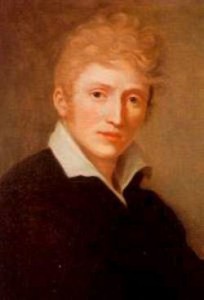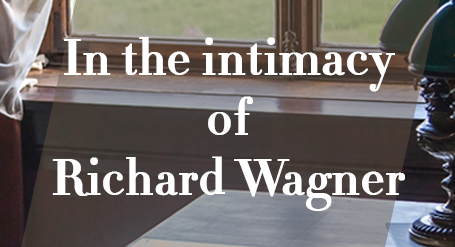
If Wagner defrayed the cultural and musical chronicles of his time, if he was even a revolutionary activist stricken with exile and pursued by police forces even outside his country, and if he was finally the Master of Bayreuth celebrated as one of the major artists of his time, the famous composer remained above all a man made of flesh and blood, animated by passions, with a character sometimes violent, sometimes facetious, and sometimes tender …
RICHARD WAGNER’S PARENTS
RICHARD WAGNER, THE MAN
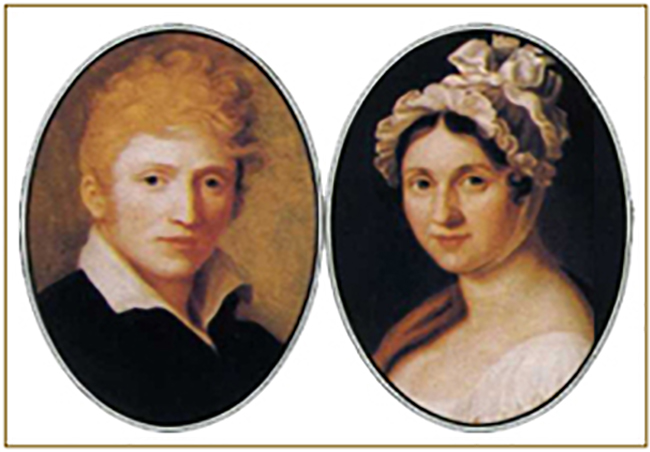
Richard Wagner’s parents ; Richard Wagner’s physique (Fr) ; Wagner and women (Fr) ; Wagner and homosexuality (Fr); Wagner, his friends, his enemies; Friedrich Nietzsche and Richard Wagner, from friendship to breakup (Fr) ; The religious opinions of Richard Wagner (Fr) ; Wagner and Freemasonry? (Fr) ; Wagner and the question of anti-Semitism.
THOSE RELATED ARTICLES MAY
INTEREST YOU
 Johanna Rosine PÄTZ
Johanna Rosine PÄTZ
(19. September 1774 – 9. January 1848) Wife of Carl Friedrich Wagner and Richard Wagner’s mother. Richard’s mother was born in Weissenfels, about thirty kilometers south-west of Leipzig, on 19. September, 1774 (read more…)
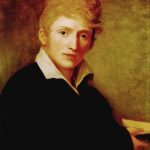 Ludwig GEYER
Ludwig GEYER
(21. january 1780- 29. september 1821). Since Friedrich Wagner died when his newborn was only six months old, he did not leave a real conscious recollection in Richard’s memory. (read more…)
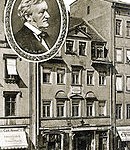 YEAR 1813
YEAR 1813
CHILDHOOD AND ADOLESCENCE. 22 mai 1813 :« Aux premières lueurs du matin » (Mein Leben), Wilhelm-Richard Wagner naît au deuxième étage de la maison dite du Lion Rouge et Blanc, au numéro 3 de l’avenue du Brühl, une grande rue commerçante de la cité, dans le quartier juif de Leipzig. (Fr) (read more…)
by Pascal BOUTELDJA
In May 1855, for his birthday, Richard Wagner dedicated to himself the following short poem:
“In the marvellous month of May,
Richard Wagner came out of the egg;
Many who love him would wish
For him to have rather remained there!”
This sarcastic couplet could easily be interpreted as an unconscious recollection of the first years of his life; early years characterised by several traumatic events that one can suppose – even without psychological knowledge – that the child’s unconscious could not have not been affected. Like Nietzsche, Wagner could have begun his autobiography with these lines: “I am a plant born near the field of the dead.” Richard was born in Leipzig on Saturday, 22 May, 1813. He was the ninth child of Friedrich Wagner, clerk at the police directorate, and Johanna Rosine, born Petz (or Pätz). The eldest son, Albert, had just turned fourteen. But this father died while his last son was only six months old. The child was raised by Ludwig Geyer, friend of Friedrich, who married in 1815 Richard’s mother.
The latter grew up considering this step-father like his own father, until he himself passed away in 1821. Obviously, Geyer‘s close ties with the Wagner family allowed the biographers to ask Siegfried’s question : “So how was my father?[1]“ by not failing to turn it into “who was my father, Wagner or Geyer?”Indeed, Richard’s origins concerned posterity for an extremely long time. And as if his paternal filiation was not sufficiently uncertain, an air of mystery hung over his mother as well. Not about her identity – fortunately! – but about her age, her name and her origins, which seemed to be surrounded by a secret she was hiding from her children.
All these uncertainties could be regarded as biographical details, if these events had not had a profound effect on Wagner’s psyche. This is evidenced by the obsession he showed in his dramas for his “fatherless protagonists” (Robert Gutman). The fact that several Wagnerian heroes are orphans or that the death of the father occupies a primordial place in his work is probably not a coincidence. Thus, by considering a Freudian interpretation of Wagner’s early childhood, one could evoke a psychopathological syndrome in which, in the absence of the father, would be added ambiguous maternal relations.
This would explain – by still following a Freudian approach – the confusion of the maternal and the erotic lived by several characters of his dramas. But let’s stop here the psychological interpretations. Other authors have given much hazier speculations by pretending to decrypt everything with psychology. Also, you will have understood why it is necessary to answer another question that Siegfried asks: “Who are my father and mother?[2]“ by taking up the facts.
THE FATHER : FRIEDRICH WAGNER
Carl Friedrich Wilhelm Wagner was born on 18 June, 1770 – the same year as Beethoven – in Leipzig. Richard’s grandfather, Gottlob Friedrich Wagner (1736-1795), born in Müglenz, studied theology at Leipzig University, then, having failed, became a tax collector just outside of the Ranstadt. He married in 1769 Johanna Sophie Eichel, daughter of a teacher from Leipzig. They had four children: the first died in infancy, then Adolf[3], Friedrich and Friederike. Richard’s father attended St Thomas school starting from December 1780 and joined nine years later the university of the Saxon city. After studying law, in 1794 he became a jurist and deputy clerk at the Court of Justice of the City of Leipzig. It was not until 1810 that he obtained the position of clerk at the police directorate, thanks to his knowledge of the French language [4] and the support of Marshal Davout [5].
Richard told us in his autobiography: “He was very fond of poetry and literature, and was particularly interested in theatre[6]“. Thus he named his daughters by taking inspiration from the heroines of Goethe and Schiller and gave them a very good education. He himself appeared with some success in a comedy by Goethe, Die Mitschuldigen (The Accomplices). This passion also expressed itself in the form of courteous ardours for the actresses of theatre.
Friedrich assiduously went out with a celebrity of the time. His meetings were numerous enough for his wife to have still complained about it to her children, jokingly. The couple thus led a somewhat fanciful life. Hoffmann, then conductor at the New Theatre in Leipzig, met Friedrich on 17 June, 1813. “An exotic man[7],” he wrote in his Diary. We have no portrait of him. According to the testimony of a friend of Albert Wagner’s daughters (Richard’s elder brother), received in the 1890s, he was “small and bent, but with a beautiful face[8].”
THE MOTHER : JOHANNA ROSINE
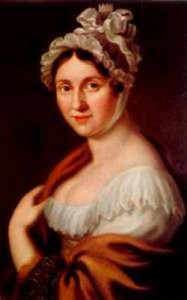
Richard’s mother was born in Weissenfels, about thirty kilometers south-west of Leipzig, on 19 September, 1774 [9]. She was the sixth child (and the fourth child that lived) of the baker or miller Johann-Gottlob Pätz and his first wife, Dorothea Erdmuthe, née Iglisch, daughter of a tanner. The latter died when Johanna was fourteen. Her father remarried on 28 October, 1788 (and entered into a third marriage in 1795). Johanna surrounded her genealogical tree with a certain mystery, although the master baker recognized her as his legitimate daughter.
She told her children that her maiden name was Perthes. They learned that it was actually pronounced Petz. Richard himself hesitated between three spellings: Pätz, Petz or Beetz [10]. Was it to hide the difference in social condition between her family and her husband’s? She said that she had been brought up not by her parents, but in one of the best boarding schools in Leipzig. This unusual education at that time for the daughter of a craftsman would have been made possible by the solicitude of a high-ranking protector, “a great friend of her father. This friend […] was a prince of Weimar who had done many favours to his family[11]“ Wagner told us in Mein Leben. His education would have been interrupted by the sudden death of this friend.
Some biographers [12], especially Houston-Stewart Chamberlain (Eva‘s husband, Richard’s second daughter), concluded that Johanna Rosine could have been the natural daughter of Prince Friedrich Ferdinand Constantin of Saxe-Weimar (1758-1793), the only brother of Grand Duke Karl August (1757-1828), reigning prince and benefactor of Goethe. Chamberlain, in order to direct the presumption of paternity on the personality of Prince Constantin, did not hesitate to make Wagner’s mother four years younger, and could assert unscrupulously that the lineage of the master of Bayreuth dated back to the dawn of the Middle Ages.
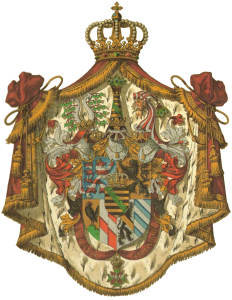 It has since definitively been proved, in part thanks to the work of Otto Strobel, archivist of Bayreuth and curator of the Richard Wagner Museum in the 1930s, that the paternity of the Prince of Weimar is excluded: he was only fifteen years old when Johanna Rosine was born and lived under close surveillance in Weimar, a city he never left during those years… How did the attention therefore focus on Prince Constantin? In 1981, with his talent as a novelist, Martin Gregor-Dellin recounted in his biography: “Maybe at fifteen, Johanna brought to the poets their morning bread at the inn. It is likely that Schiller, Körner and Humboldt were staying in Weissenfels in the previous years, probably since 1789. […] It cannot be precluded that one of them noticed, in the amateur theatre of Weissenfels, the acting talent of the graceful and pretty Johanna Rosine. It is possible that it was communicated to Prince Constantin de Weimar, who was competent for all things related to theatre of his state. If Prince Constantin had the young Johanna raised in Leipzig, a city open to theatre, this could also explain that this education was interrupted at his death in 1793 [victim of an epidemic in a military camp][13]“. A troubling explanation, since Johanna Rosine seems to have had no further training, she left school in 1789. Something her son confirmed evoking a very inadequate training and education; and indeed her German was terrible… And what if Johanna was neither the daughter nor the protege of the Prince of Weimar, but his mistress!
It has since definitively been proved, in part thanks to the work of Otto Strobel, archivist of Bayreuth and curator of the Richard Wagner Museum in the 1930s, that the paternity of the Prince of Weimar is excluded: he was only fifteen years old when Johanna Rosine was born and lived under close surveillance in Weimar, a city he never left during those years… How did the attention therefore focus on Prince Constantin? In 1981, with his talent as a novelist, Martin Gregor-Dellin recounted in his biography: “Maybe at fifteen, Johanna brought to the poets their morning bread at the inn. It is likely that Schiller, Körner and Humboldt were staying in Weissenfels in the previous years, probably since 1789. […] It cannot be precluded that one of them noticed, in the amateur theatre of Weissenfels, the acting talent of the graceful and pretty Johanna Rosine. It is possible that it was communicated to Prince Constantin de Weimar, who was competent for all things related to theatre of his state. If Prince Constantin had the young Johanna raised in Leipzig, a city open to theatre, this could also explain that this education was interrupted at his death in 1793 [victim of an epidemic in a military camp][13]“. A troubling explanation, since Johanna Rosine seems to have had no further training, she left school in 1789. Something her son confirmed evoking a very inadequate training and education; and indeed her German was terrible… And what if Johanna was neither the daughter nor the protege of the Prince of Weimar, but his mistress!
This is what Gregor-Dellin brilliantly demonstrated, based on numerous documents from the archives of the Grand Duke’s treasurer, mentioning the pensions granted to the favorites and to his mistresses from the petty bourgeoisie and their illegitimate children, in an article published in 1985 (thus subsequent to his biography…), titled: Results of recent research on Wagner (the mystery of the mother) [14]. It turns out that the prince, who had become general of the cavalry division in the army of the prince-elector of Saxony, lived for quite some time, during the year 1790, and twice in Weissenfels, including once (from June to September) not far from the Pätz bakery. It was at this moment that the liaison between the prince and the baker’s daughter began.
Here is what the German biographer stated to us: “Constantin moved his dear Johanna Rosine in Leipzig, with her consent, and not without having probably slightly changed her last name; however, he placed her, not in a distinguished institution, but with a certain lady Sophie Friederike Hesse[15]. Johanna Rosine also received money for her toilette and jewellery, and if Constantin made sure she was given elocution, writing and deportment lessons, it was certainly not for noble purposes or to prepare an acting career, but simply to have a mistress worthy of his rank. She also was not given a high allowance […], since the liaison remained without consequence[16]“. After the departure of Prince Constantin for the war, followed by his death in 1793, the young Johanna was abandoned to her fate.
Gregor-Dellin went on to say: “The secret council, of which Goethe was a member, made the following decision in 1793: the daughter of the baker Bezin, of Weissenfels, at the time in a boarding house with a certain lady Hessin in Leipzig, received for the last time the fifty Reichtalers due to the St Michel and was abandoned to her fate [17]“. The latter was named Carl Friedrich Wagner, whom she married on 2 June, 1798. It is this succession of events that explains why Johanna remained enigmatic, as Wagner noted in Mein Leben, about her name, her age and her origins. In his autobiography, he never evoked his maternal grandparents. It seems that Johanna Rosine had broken all ties with her family in Weissenfels, that she never gave her children the opportunity to visit her hometown; where she was only a kept daughter of a baker…
The intrusion of death within the family circle marked the first months of Richard’s existence. His father succumbed at the age of forty-three to epidemic typhus. The epidemic had broken out in the aftermath of the fighting in the bloody Battle of the Nations that took place in Leipzig from 16 to 19 October 1813. The hospitals in the city were unable to receive all the wounded, who thus were rushed in churches and schools. Many corpses could not have been buried, and the waters of the Elster were filled with corpses of men and horses. Inevitably, malnutrition, promiscuity and defective hygiene favoured the occurrence of an typhus epidemic.
On 4 November, was counted the death of more than 20,000 people in this town. Hoffmann, who was in Dresden when the epidemic broke out, noted the symptoms in his diary, “headache, dizziness, numbness, death, all within a few hours [18]“. Friedrich Wagner, weakened by the overwork imposed by the police service linked to the disorders of war, was infected by the illness and died on 23 November, 1813. He left nothing to his youngest son, then six months old, not even a portrait… The child would only know him through the distorting mirror of the family discourse. Johanna published an obituary in the Leipziger Zeitung stating that he had been “the victim of his duty… too soon departed for me and my eight dependent children[19]“.
After the death of its chief, the Wagner family, torn away from bourgeois security, was threatened with total dispersion. Johanna Rosine was thirty-nine. In such troubled times, she was alone or almost, without resources (apart from the meager pension paid by the administration), with the burden of raising three sons and four daughters (in 1813, Ottilie was two years old, Klara six, Luise eight, Julius nine, Rosalie ten and Albert fourteen). Out of all the children by the couple, a son Gustav, born in 1801, died at the age of seven months; a daughter, Theresia, did not survive her fourth year, swept away by an epidemic on 19 January, 1814. Johanna could not count on the support of her brother-in-law, Adolf, who lived withdrawn from the world or her sister-in-law, Friedericke. Ludwig Geyer immediately rescued his friend’s widow. He was at first only able to take care of the family through financial assistance. The return of peace in Germany, the promotion to the rank of Court actor in Dresden allowed Geyer to claim Johanna and her children. After a short engagement, they married on 28 August, 1814, in Pötwitz, near Weissenfels. Richard, aged 14 months, once again had a father and a safe home, this time in Dresden. On 26 February, 1815 was born Cäcilie, the legitimate daughter of Geyer and Johanna.
THE STEPFATHER : LUDWIG GEYER
Since Friedrich Wagner died when his newborn was only six months old, he did not leave a real conscious recollection in Richard’s memory. It is not surprising then that the child loved Ludwig Geyer, his stepfather, as naturally and sincerely as if he owed everything to him, even his life. Richard called him “our father Geyer [20]“. He always spoke about him with respect and affection in his memories and conversations. He thus wrote to Mathilde Wesendonck about the painted self-portrait of Geyer: “It is a noble, gentle, melancholic, and unwell face that infinitely moves me. This portrait has become very dear to me [21]“. The description he made of it in Mein Leben was very positive: “Another testimony of his [Friedrich Wagner‘s] pronounced taste for theatre was the choice of a friend who closely shared the intimacy of our home, the actor Ludwig Geyer was, above all, guided by his love of theatre for the choice of this friend, he found in him at the same time the most generous benefactor.
For Ludwig Geyer took a deep compassion for the fate of his friend’s abundant progeny when the latter passed away prematurely and henceforth he devoted himself to the care and education of this family. Homeless; hardened by life, Ludwig Geyer showed how much he aspired to a family atmosphere by marrying his friend’s widow a year later; he from then on became the most attentive father for the seven children whom the other had left behind. This distinguished man […] handled my education with the greatest care and affection. He wished to adopt me as his own son, and that is why he gave me his name when I was admitted to my first school, so that, for my fellow students in Dresden I remained Richard Geyer until my fourteenth year [22].”
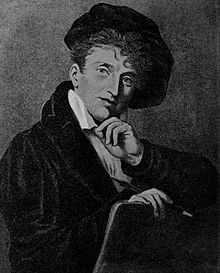 Ludwig Heinrich Christian Geyer was born on 21 January, 1780 in the town of Luther, Eisleben, where his father served as an actuary at the revenue office. He began his law studies in Leipzig, that his father’s death forced him to interrupt. He also attended for some time the Academy of Fine Arts of Dresden. For several years, he travelled through the small provincial towns and the water towns as a portraitist. Although his training was precarious, he was not devoid of talent. Back in Leipzig, it was probably in 1800 that Geyer met Carl Friedrich Wagner, who was almost ten years his senior. The latter recommended to his friends “a young portraitist, who, by a twist of fate, was suddenly forced to abandon his law studies [23]“. A deep friendship arose between the two men and Geyer became a close friend of the family.
Ludwig Heinrich Christian Geyer was born on 21 January, 1780 in the town of Luther, Eisleben, where his father served as an actuary at the revenue office. He began his law studies in Leipzig, that his father’s death forced him to interrupt. He also attended for some time the Academy of Fine Arts of Dresden. For several years, he travelled through the small provincial towns and the water towns as a portraitist. Although his training was precarious, he was not devoid of talent. Back in Leipzig, it was probably in 1800 that Geyer met Carl Friedrich Wagner, who was almost ten years his senior. The latter recommended to his friends “a young portraitist, who, by a twist of fate, was suddenly forced to abandon his law studies [23]“. A deep friendship arose between the two men and Geyer became a close friend of the family.
Together they made amateur theatre. Friedrich Wagner undoubtedly quickly noticed that his young friend’s acting talent far surpassed his own. After commitments in various small towns in Germany, he joined the troupe of the Magdeburg theatre in 1805. At the end of this year, he left town for Stettin, where he lived until the dissolution of the troupe in the autumn of 1806. He then lived in Breslau until August 1809 before returning to Leipzig. Geyer was engaged in October 1809 in Joseph Seconda’s troupe, who played in this town during the summer and during fairs, and in Dresden in the winter. In 1814 he was promoted to the rank of Court actor; the Seconda troupe having been integrated into the Court Theatre in Dresden. This artist of honest and bourgeois reputation, with a cheerful character, excelled in character roles. The reviews were very laudatory. Endowed with multiple talents, Johanna‘s second husband was also a playwright. He wrote several plays. Wagner would remember The Infanticide of Bethlehem, which was “praised by Goethe in the most pleasant manner [24]“.
However his roles and plays did not allow Geyer to live properly. His solid reputation as a portraitist made up for it. In Dresden, he was commissioned to make the portrait of the Queen of Saxony, and, in 1819, on a tour of Munich, he portrayed several members of the Bavarian aristocracy. It was him that made in 1813 the oil painting of Johanna-Rosine; in 1806, he also produced two self-portraits. Geyer would have liked his adopted son to turn to painting, but the young boy showed no disposition in this field and could not draw! On the flip side, he introduced him to the theatrical world: “The most distant memories of my youth are thus connected to this adoptive father and, through him, slide towards theatre. (…) The discovery of theatre was a revelation for me; not only did I have access to the secret lodge from which one could go on the stage, not only did I visit the dressing room with its fantastic costumes and accessories, but I also participated personally in the game [25]“. This predestination was further reinforced by his stepfather when, on the eve of his death, hearing Richard tap on the piano, he asked, “Would he have a flair for music?[26]“ Death continued its harvest: on 29 September, 1821, tuberculosis took away the man who had guided Richard through his early childhood. Wagner wrote: “I was taken to my father’s bedside; the extreme weakness with which he spoke to me, the means used to try to alleviate the suffering caused by his acute pleurisy, all this made me feel like I was living a nightmare, and I believe that I was struck by it to the point of being unable to weep[27].”
“How was my father? [28]”
Geyer‘s close ties with the Wagner family led some biographers to conclude that he would be Richard’s natural father. Although there is no evidence, this possibility should not be excluded. The theory of Geyer’s paternity is accepted by the biographer Robert Gutman who went so far as to even suggest that the actor could very well be the father of other children than Richard and Cäcilie [29]. However, it was categorically rejected by the first biographers (Carl Glasenapp, Julius Kapp or Houston-Stewart Chamberlain). Among modern authors, Zdenko von Krafi, Curt von Westernhagen and Martin Gregor-Dellin did not retain the possibility of an adulterous paternity. The biographies published recently across the Rhine by Joachim Köhler (2001) and Udo Bermbach (2006) also challenged this hypothesis.
Wagner wrote in his autobiography: “Already, while the police clerk spent his evenings at the theatre, the excellent actor often replaced him with my mother, whom he had to appease when, rightly or wrongly, she complained about her adulterous husband [30]“. Similarly, in mid-July 1813, when his function forced her husband to live near Leipzig, Johanna joined Ludwig Geyer in Teplitz, after an extremely perilous journey of more than one hundred and sixty kilometers through enemy-occupied territories. This strange journey, three months after Richard’s birth, raises questions. The episode was only discovered in the XXth century. One of the explanations proposed is that Johanna would have been eager to see Geyer again and show the baby to his father. These anecdotes gave rise to all sorts of speculations. Wagner himself wrote: “It is in any case difficult to believe that it is the only feeling of duty towards the family of a deceased friend that incited Ludwig Geyer to marry a woman who was past her prime: the heart certainly had a say [31]“.
In 1870, his half-sister Cäcilie handed Richard the letters written by Ludwig Geyer to his mother before their marriage. Wagner replied to her on 14. January: “It is rare to see in life such a perfect example of complete self-sacrifice for a noble purpose as in this case […]. I think I now fully understand this relationship, even if I find it extremely difficult to express what I think. It seems to me that our father Geyer believed that he was atoning for a fault by sacrificing himself for the whole family [32]“. Gregor-Dellin felt that nothing proves that Johanna Rosine consoled herself with the devoted Geyer about her husband’s “artistic” escapades: “As for Friedrich Wagner‘s friend, it would seem that he did not cross the boundaries of decorum. The friendship between the two men remained unequivocal until the first one’s death.[33]“
Of course, it is also impossible to exclude it totally. The conclusions of the physiognomic demonstrations, comparing the resemblances between Richard and the other descendants of the official father (portrait of his brother Albert) are insufficient. Indeed, there is no portrait of Friedrich Wagner, only one of his brother Adolf. Furthermore, judging by the facial features, Richard probably looks very much like his mother, as evidenced also by the family resemblance with his half-sister Cäcilie.
As for the assertion of two Americans desperate for discoveries, in their badly-named work “The Truth About Wagner”, who based their reflections on Nietzsche, to assert that Wagner would have indicated on the front page of the manuscript of the private edition of Mein Leben that Geyer was his father, it is absolutely gratuitous [34]“. Nietzsche would, of course, write that “what circulates nowadays under the title “Life of Wagner” is just formulaic fable, if not worse. I confess my distrust of the points of his biography that he himself confirmed [35]“. What is certain is that, in 1888, in The Case of Wagner, the philosopher, at odds with the one that he admired so much, wondered acrimoniously if Wagner was really German: “A vulture is already almost an eagle…[36]” In German, “eagle” is called “Adler” and “Vautour“: “Geier“. Behind this assertion, there is especially a perfidious allusion by Nietzsche to the fact that Geyer may have been of Jewish origin: Adler being a name very common among German Jews. Considering the current knowledge on the subject, arguments aiming to prove that Ludwig Geyer is not Wagner’s biological father seem the most convincing.
What did the Master of Bayreuth think? Even if he denied it to Cosima [37], Wagner himself believed in the possibility that Geyer was his biological father [38]. Philippe Muller, analyzing the corpus of all his dreams from 1869 to 1883, highlighted that Richard believed himself to be the son of Geyer. When Nietzsche was in charge of correcting the proofs of Mein Leben, [39] Wagner wrote to him on 16 January, 1870 about a coat of arms that was to decorate the private edition: “[It] is very well made and we have all the reasons for thanking you for the care you have given to it. I have just found the old sketch of the vulture; that each one will at first mistake for an eagle until it is shown, in a natural history, that this variety of vulture closely resembles the eagle. Since it is important – because of the symbol – that the vulture is immediately recognized as such, we urge you to ask the engraver to add to our bird its distinctive collar. This modification should be possible [40]“
What did he want to suggest about the choice of this imagery? Was it to reveal who had been his father by blood? Did he not rather want to pay homage to the man who had really fulfilled this role? But the coat of arms [41] also includes the constellation “Big Dipper” evoking the Wagners (from Wagen, car or cart in German).
A remark by Cosima in her Diary, if one reads it correctly, asks, “R. then said that Fidi [Siegfried, Wagner’s son], to whom he had asked to keep his beret, had a magnificent appearance, that he quite looked like his father Geyer. Me: ‘Your father Geyer was certainly your real father.’ R.: ‘I do not think so. Me: ‘Where does the resemblance come from? ‘R.:’ My mother loved him at the time, the elective affinities.” [42]. The important thing here is not the evasive answer, according to the Goethean expression, from Richard to Cosima, but what he says just before, while looking at Siegfried: he looked like Ludwig Geyer. Must one deduce that Geyer was the artist’s genitor? In fact, is knowing the identity of his true father of such importance? What matters is that Wagner asked himself the question, as well as his attitude to the uncertainty of the answer.
He could never fully reassure himself on this subject. But he applied himself to avoiding this kind of questioning about his own son. On 9 February, 1879, he wrote to Ludwig II of Bavaria: “The son, still so young, will have to know exactly, when he will reach maturity, who was his father. Nothing more: May he then judge me [43]“. One cannot fail to see here, a behaviour aimed at reducing symbolically his paternal deficiency. Some commentators (Nattiez, Millington) saw in the ambivalence of Wagner’s feelings towards Geyer the possibility that he believed that Geyer could be of Jewish descent. It has been demonstrated thus far in an indisputable way that the Geyer family, from Saxony-Anhalt and composed of pastors and cantors, was strictly Protestant; but Wagner did not know it… However, nothing in his writings shows any hostility towards Ludwig Geyer. All the testimonies indicate, on the contrary, his feeling of gratitude.
« My mother – a woman! [44] »
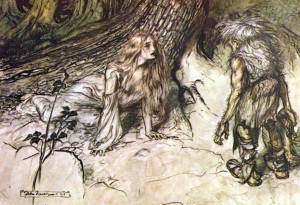 The psychological ramifications of his relationship with his mother are not any less complex. At the time when she became a part of Wagner’s memory – she was already old when he was born -, headaches compelled her to wear a bonnet constantly; the painting by Ludwig Geyer immortalised her in this aspect. Wagner confided in his autobiography: “I could not keep the image of a young and gracious mother. The troubles that agitated her in the middle of a large family (of which I was the seventh living member), the difficulties she had in providing for us and sacrificing to a certain decorum, in spite of very limited means, hardly left her with the leisure to manifest those outpourings of tenderness that are peculiar to a mother. I barely remember having received a caress from her: on the other hand, it was common for her to show a lively, almost ill-tempered and irascible character [45]“.
The psychological ramifications of his relationship with his mother are not any less complex. At the time when she became a part of Wagner’s memory – she was already old when he was born -, headaches compelled her to wear a bonnet constantly; the painting by Ludwig Geyer immortalised her in this aspect. Wagner confided in his autobiography: “I could not keep the image of a young and gracious mother. The troubles that agitated her in the middle of a large family (of which I was the seventh living member), the difficulties she had in providing for us and sacrificing to a certain decorum, in spite of very limited means, hardly left her with the leisure to manifest those outpourings of tenderness that are peculiar to a mother. I barely remember having received a caress from her: on the other hand, it was common for her to show a lively, almost ill-tempered and irascible character [45]“.
Moreover, in addition to denying him the oedipian attachment that the young child demanded, his mother also forbade him the world of theatre: “My mother was concerned with not letting any inclination for theatre grow in me. […] She almost threatened me with her curse if I pretended to be interested in theatre. These negative traits and the absence of maternal instinct are to be compared with a letter that Wagner wrote in September 1842 to Cäcilie; it refers to the lack of principles and whims of his mother, her fickleness, her tendency for the falsification of facts and fondness for gossip, her cupidity and selfishness [47]… But it is crucial to specify that age seems to have profoundly disturbed his mother’s character. Johanna would spend the rest of her life safe from material worries, thanks to her daughters and their rich marriages.
She died on 9 January, 1848, at the age of seventy-four. “She had spent the last years of her life, formerly so active and so unstable, in the serenity that comfort provides and, towards the end in a state of peaceful unconsciousness[48]“ Wagner told us in his autobiography. He added, evoking his mother’s funeral: “I rushed to Leipzig for her funeral and I had the joy of being able to contemplate for the last time and with deep emotion the serene and peaceful face of the dead woman. […] We laid her in the grave on a cold morning. The clod of frozen soil that I took, according to custom, to throw it on the coffin, fell on the lid with a violent noise that frightened me. […] During the short journey from Leipzig to Dresden, I was clearly aware of the complete isolation I was in. The death of my mother had broken the natural ties between brothers and sisters absorbed by their personal interests[49]”.
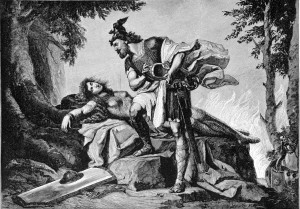
Richard’s relationship with his mother, probably very strong, was actually much more complex and marked with an extreme ambivalence. This is evidenced by a famous letter, written in Karlsbad on 25 July, 1835, that he addressed to her when she was sixty-one: “You are the only one, my dear mother, to whom I think with the most fervent love and the most profound emotion”, then he added with suspicious excess:” I am undoubtedly one of those people who do not always know how to speak with their hearts in the moment, otherwise you would have quite often received the revelation from one side of my much tender nature. But feelings remain the same, and you see, Mother, now that I am away from you, I feel overwhelmed with gratitude for the magnificent love that you pour out on your child, and that you once again expressed recently with so much warmth and affection; It is so strong that I would like to write to you and say it with all the tenderness of a lover towards his beloved. What am I saying, it is so much more than that, isn’t the love of a mother indeed much more immaculate than any other?” The letter culminated in this sentence, in which he seemed to be wanting to be sure of his own feelings: “My dear, very dear mother, what a wretch I would be if my sentiment were to ever be cold towards you![50]“
To conclude, let’s find young Richard in his early years of childhood. He showed a strong tendency towards indiscipline, and displayed turbulent behaviour, unruliness, and an irascible character. The biographers asserted that he was an “enfant terrible”, quick to be rowdy, but who arose the sympathy of all. Thanks to a letter of this time, it is learned that he hardly spent a day without tearing the bottom of his pants. It was said of him that he was a “noisy, a little brusque, almost violent[51]“. His stepfather liked to call him “the Cossack [52]” or “the little goblin“. The turbulent character is often attached by psychologists to a lack of internalised paternal image. In any case no sign that could indicate a child prodigy or a budding genius! The future would prove the opposite…
![]() PB in WAGNERIANA ACTA 2010 @ CRW Lyon
PB in WAGNERIANA ACTA 2010 @ CRW Lyon
[1] « Wie sah mein Vater wohl aus ? » (Siegfried, Act II, scene 2)
[2] « Wer ist mir Vater und Mutter ?» (Siegfried, Act I, scene 1)
[3] The uncle that Richard talks about with so much warmth in his autobiography and for which he nurses the most lively admiration. Adolf was a renowned and respected academic, who trained notably in Jena and Dresden, a theologian, a philologist and a man of letters at once. This uncle would play a decisive role in the general education and literary training of young Richard
[4] How Friedrich learned French is still a mystery.
[5] Ernest Newman, The Life of Richard Wagner. 1.1813-1848. London, Cambridge University Press,1976.
[6] Richard Wagner, My Life. Paris, Buchet/Chastel, 1978, p. 13.
[7] Herbert Barth, Wagner. A documentary study. Paris, Gallimard, 1976, p. 147.
[8] Mary Burrell, Richard Wagner. His Life and Works from 1813 to 1834. Thalwil (Suisse), Editions TIMO
Verlag, s.d., p. xv.
[9] Some sources incorrectly present the date of 1778.
[10] Other spellings exist: Bertz, Betz and Berthis.
[11] Richard Wagner, My Life, p. 19
[12] See:« The prince Constantin question », in : Ernest Newman, The Life of Richard Wagner. II. 1848-1860, pp.613-619.
[13] Martin Gregor-Dellin, Richard Wagner. Paris, Fayard, 1981, p.40.
[14] Martin Gregor-Dellin, Recent search results on Wagner. Bayreuther Festspiele Programm
Parsifal, 1985, pp. 81-90.
[15] Wagner’s mother never told her children the name of the “institution” of Leipzig, where she would have been brought up… and for good reason!
[16] Martin Gregor-Dellin, Recent search results on Wagner, p.87.
[17] Ibid, p.87
[18] Joachim Köhler, Richard Wagner. The Last of the Titans. London, Yale University Press, 2004, p.9.
[19] Mary Burell Richard Wagner. His Life and Works from 1813 to 1834, p. 16.
[20] Richard Wagner, My life, p. 13-14.
[21] 29th septembre 1858 letter, in : Richard Wagner to Mathilde Wesendonk. Paris, Parution, 1986, p.90.
[22] Richard Wagner, My life, p. 14.
[23] Ernest Newman, The Life of Richard Wagner. 1.1813-1848, p. 16.
[24] Richard Wagner, My life, p. 14.
[25] Ibid, p.14-15.
[26] Ibid, p.15.
[27] Ibid, p.15.
[28] « Wie sah mein Vater wohl aus ? » (Siegfried, Act II, scene 2)
[29] Robert Gutman, Richard Wagner, the man, his mind, and his music. NewYork, H.B. Jovanovich, 1968, p. 7.
[30] Richard Wagner, My life, p. 14.
[31] Richard Wagner, My life, p. 19.
[32] Family Letters of Richard Wagner. London, Macmillan, 1911, p. 279.
[33] Martin Gregor-Dellin, Richard Wagner, p. 21.
[34] P.-D. Humet W.-L. Root, La Vérité sur Wagner. Paris, Stock, 1930,p. 25.
[35] Friedrich Nietzsche, The case of Wagner. Paris, Editions Allia, 2007, p. 59.
[36] Ibid, p.59.
[37] Cosima Wagner, Journal. III. 1878-1880. Paris, Gallimard, 1979, p. 288.
[38] Carl-Friedrich Glasenapp, Das Leben Richard Wagner. BandI. Leipzig, Breitkopf und Härtel, 1894, p. 78.
[39] The autobiography that he had printed in some copies intended for his close friends.
[40] Quoted by Jean-Jacques Nattiez, Wagner Androgyne. Paris, C. Bourgois, 1990, p. 220
[41] Above the main entrance of the Villa Wahnfried are two coats of arms painted on glass: the one on the left reproduces this symbol; the one on the right carries a pot-spoon, the emblem of Tribschen.
[42] Cosima Wagner, Journal. III. 1878-1880, p. 288.
[43] Blandine Ollivier, L’Enchanteur et le roi des ombres. Paris, Perrin, 1976, p. 323.
[44] « Meine Mutter – ein Menschenweib ! » (Siegfried, Acte II, scène 2).
[45] Richard Wagner, My Life, pp. 19-20.
[46] Richard Wagner, My Life, pp. 19-20.
[47] Sämtliche Briefe. Band II, 1980, pp. 155-160.
[48] Richard Wagner, My Life, p. 236.
[49] Richard Wagner, My Life. II. 1842-1850, pp. 226-227.
[50] Sämtliche Briefe. BandII, pp. 209-213.
[51] Martin Gregor-Dellin, Richard Wagner, p. 26.
[52] Herbert Barth, Wagner. A documentary study, p. 148.
If you wish to share further information about this article, please feel free to contact us !

